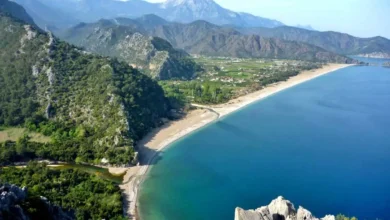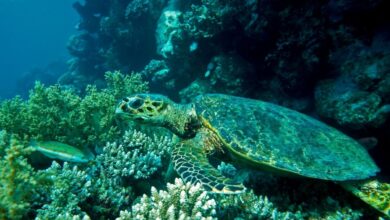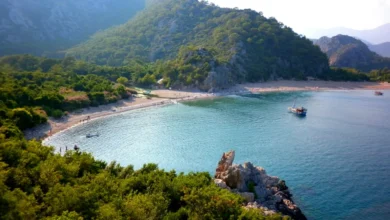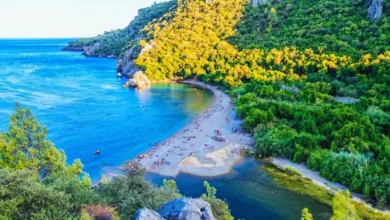The northern Kara Mountain area of Olympos is one of the Mediterranean’s few remaining nesting sites for Caretta caretta (loggerhead sea turtles), featuring fine sandy beaches. Until the 1980s, locals paid little attention to this remarkable natural phenomenon; however, with the arrival of conservation association teams, both the importance of the turtles was recognized and tourism received a significant boost. The association founded in Çıralı declares the beaches a protected area during the nesting season in July and August to conduct conservation efforts.
For detailed information about Olympos and everything related to its beaches and sea, check our Olympos Travel Guide or our How Is the Olympos Sea & Beach? article.
History and Conservation Efforts

- In the early 1980s, NGOs exploring the region confirmed the presence of loggerhead turtles.
- Local residents collaborated with associations to protect nests and provide guiding support.
- During July–August, the beaches are declared protected areas, providing employment opportunities for some locals.
Species and Physical Characteristics

- Caretta caretta has thrived in world’s oceans for approximately 95 million years.
- Their weight ranges from 70–160 kg, with shell lengths between 90–120 cm.
- They have no teeth; their powerful jaws and saw-like palate structure allow them to easily crush both hard-shelled and soft prey.
- Their diet includes jellyfish, crabs, seaweed, and mollusks.
- Their greatest threats are fishing nets and the destruction of nesting habitats.
Reproduction Cycle

- Mating: Occurs at sea; females come ashore every 2–3 years.
- Nesting: About 15 days after mating, between May and August, they lay 100–190 eggs on virgin beaches.
- Nest Preparation: The female digs a 40–50 cm deep pit in the sand. If she senses danger, she abandons the nest and returns to sea.
- Protective Fluid: A secretion from her eyes acts as a natural protectant against sand irritation.
- Incubation: Lasts approximately 50–60 days.
- Hatchling Emergence: Hatchlings remain still on the sand for about 26 hours before heading to the sea, guided by moonlight.
- Survival Rate: Only 1–2 hatchlings per 100 eggs survive; this low rate still ensures species continuity.
Habitats

The Antalya coast sees the highest nesting density at these nine key locations:
- Belek
- Çıralı Beach
- Alanya–Demirtaş
- Gazipaşa
- Demre
- Manavgat–Kızılot
- Kumluca
- Kaş–Patara
- Kemer–Tekirova
Guidelines for Tourists

- Consider the nesting season (July–August) when planning your visit.
- Beach lighting is prohibited; if you plan a night walk, keep flashlights and phone lights off.
- Choose a guided tour to observe nests carefully without causing damage.
- Do not walk on the sand without permission; nests may be invisible.
- Avoid using flash photography; it disrupts hatchlings’ ability to orient.
- Keep the beach clean; sea turtles are severely harmed by plastic and other waste.
The beaches of Olympos and Çıralı are not only rich in ancient ruins but also offer the unique chance to witness the incredible journey of Caretta caretta. When planning your holiday, by respecting the protected area guidelines, you can help ensure the future of









